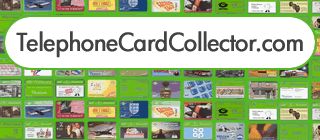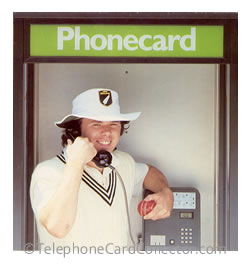 Mint or used telephone card?
Mint or used telephone card?
Back in the eighties, nineties and early noughties when telephone cards were in use in the UK finding out if it was still in credit meant a trip to your nearest cardphone payphone and inserting the phonecard into the payphone to read and display the available or remaining units or value on the cardphones digital screen.
These days with phonecards no longer accepted and most BT cardphones either having been removed all together or those that do exist unable to read and display the value of the card, how do you tell if the card you have is mint or used and why, since there are no longer in use would you want to tell if the card you have is mint or used? Read on to discover the answers.
How to tell if a Phonecard is mint or used?
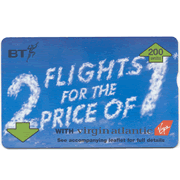 Without the luxury of a payphone to tell you whether the Phonecard you have is used or mint, the first thing to establish is which technology the card you have uses?
Without the luxury of a payphone to tell you whether the Phonecard you have is used or mint, the first thing to establish is which technology the card you have uses?
If you have a BT Phonecard it'll have either an optical strip (on early cards) or a embedded micro chip (on later cards). Mercurycards which were issued between 1988 and 1995 used magnetic technology. Since these technologies were used around the world by various different telecoms you can apply the same information to those once you have established which technology is being used.
The three types of telephone card technology:
‣Optical cards
‣Chip cards
‣Magnetic cards
If you already know the type of technology the phonecard you have uses, click the link above to go straight to that section for more information. If you aren't sure, read on to identify which type of card you have.
Optical Telephone Cards
These Phonecards were used worldwide after being developed by Landis & Gyr (L&G) in Switzerland and the vast majority of British Telecom 'BT Phonecards' use this type of technology. BT used L&G optical cards for fifteen years between 1981 and 1996, learn more about the history of BT Phonecards.
In the main BT optical cards can be identified with having a header one third of the face of the card and the cards individual design (in the example below in the Texas advertising BT Phonecard) taking up the other two thirds. The reverse of these card are normally shiny black.
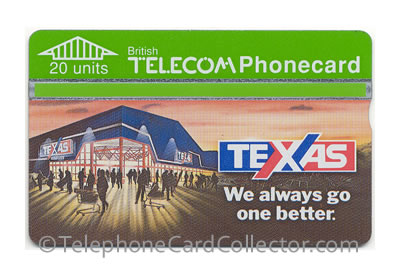
Green Strip Optical Phonecards
The first optical BT telephone cards featured a green strip (as shown below circled in red). It can be fairly difficult to tell if these Phonecards have been used or not. However, it is possible by turning the Phonecard into the light and looking along the green strip (circled below in red). When an optical Phonecard is used in a payphone, the cardphones reader scores burn marks or at very least an indentation along the cards green strip as the card is used when making telephone calls. These burn marks will appear to the right on the green optical strip.
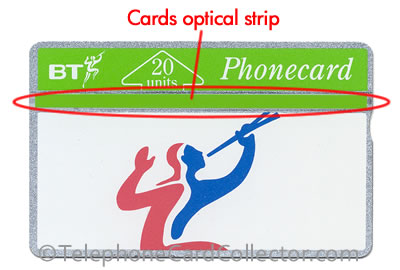
Tip: Many different denominations (card values) were available from 5 units (50p) up to 200 units (£20) with two separate 100 unit tracks. The cards value displayed in units are always shown on the front of the card (the card above has 20 units). If you can imagine, a 100 unit card track would span almost the full length of the card strip starting from the left and finishing on the far right of the cards green strip. Therefore a Phonecard with track of just 5 units would only span a short way along the green strip. It's a good idea to bear this in mind when looking along green strips of different denomination cards to help identify if the card you have is mint or used.
Thermographic Optical Phonecards
From 1992 BT optical Phonecards strips changed from green to a white (thermographic) strip. This change made it much easier to tell if a card had been used or still had remaining units.
The image below shows a BT Phonecard with 50 units (as denoted in the top left of the card), the green strip has been replacement with a white one and the black marks (lines) in the white strip clearly show that this BT telephone card has been completely used. What's more BT have also included a gauge showing a) the total number of units (in this case fifty) and b) the user, how many units remain (in this case none, as the last black mark is under the number 0 on the gauge below).
Can't see the gauge? The gauge is in quite small print and appears under the word 'Phonecard' on the cards light green header below. If the card you have is this type of telephone card and has black marks along the cards track, you know that the card has been used in part or in full, depending where the last black mark appears.
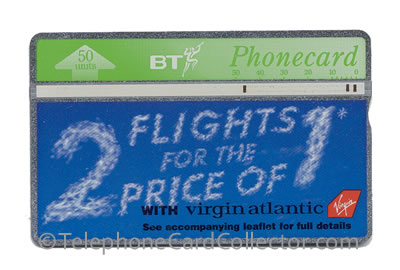
Optical Full Face Printed Phonecards
BT's optical Phonecards appearance changed again in 1995 with the introduction of full face printed cards like the BT Phonecard pictured below featuring two Eurostar trains.
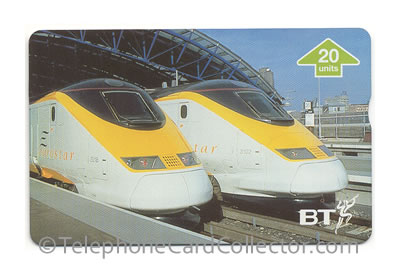
Full face printing meant that the cards strip was covered by the design of the card and thus making it difficult to tell if the card was mint or had been used. Thankfully optical card manufacturer Landis & Gyr made this possible, not from the front of the card, as had been the case with all previous BT optical Phonecards, but for the first time by looking at the reverse of the card.
Upon turning a BT full face telephone card over you'll see the cards optical track, complete with gauge ranging from 0 to 100. The cards units (telephone call credit) counts down from right to left, reflecting the fact that you are seeing the reverse of the optical track. Please see the photo below which illustrates the front and reverse of a full face BT Phonecard.
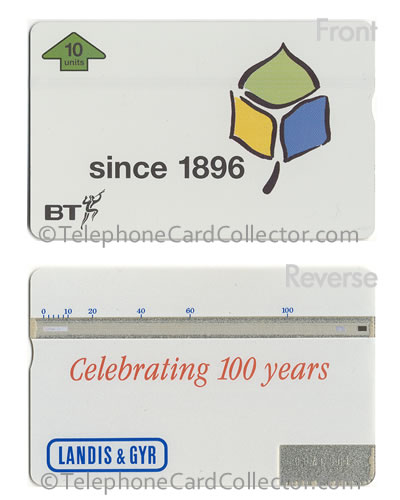
In the case of the card above, the Phonecard has 10 units, as denoted within the optical track and the lighter shade between 0 and 10 (top left). If this darker shade has a perfect hologram/reflective unblemished surface, the cards units are still intact and the card therefore hasn't been used.
If however the surface of the area between 0 and 10 is broken or has lines, then the card has been partly or fully used, depending how close to the 0 the blemishing/lines appear.
Embedded Chip Telephone Cards
On the face of it, it is impossible to tell if a chip card is mint or is used. As unlike with optical cards, chipped Phonecards are unable to display, without a card reader any available or remaining value. As all the information is contained on a micro chip, its only when this micro chip is read by a machine e.g. the payphone, that it can display the value.
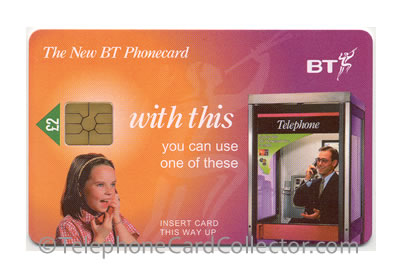
However, for an indication to whether a Phonecard containing a chip is mint or used, there is a way to check without a card reader. To check look closely at the cards micro chip, if the chip is perfect and free from (light) scratches, the chances are the card hasn't been used. If however when looking closely you can see small/light scratching/marks, the probability is that the card has been used in part or in full. This method though is far from exact.
Magnetic Telephone Cards
The vast majority of magnetic cards, just like the Mercurycard pictured below feature a black blank matt or shiny reverse with no indication to whether the card has been used or not. To make matters worse, many magnetic cards were issued brand new can be found with deep lines on the reverse, as if the card had been inserted repeatedly into a payphone reader. This was in fact due to the result of encoding the card and a function of the equipment used. So you cannot view a scratched magnetic card and believe that it must have been used within a payphone.
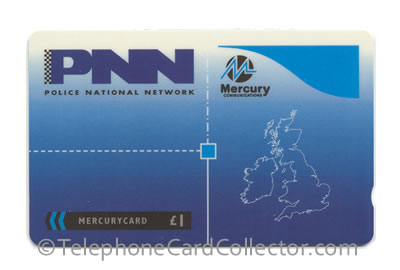
It is therefore impossible to establish whether a magnetic card e.g. Mercurycard has been used without the aid of a special magnetic reader.
However, some magnetic cards for example those issued in Jersey and Singapore do have an indication track, enabling the you to see if the card is mint or has been partly or fully used.
Last updated: 2nd January 2026
Popular Pages
Collector Shop
Site Maps
TelephoneCardCollector.com © 2013-2026
Please do NOT copy any content without prior consent, thank you.
